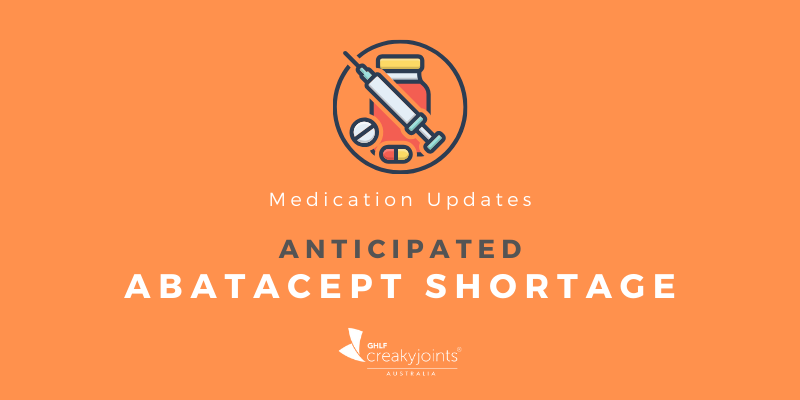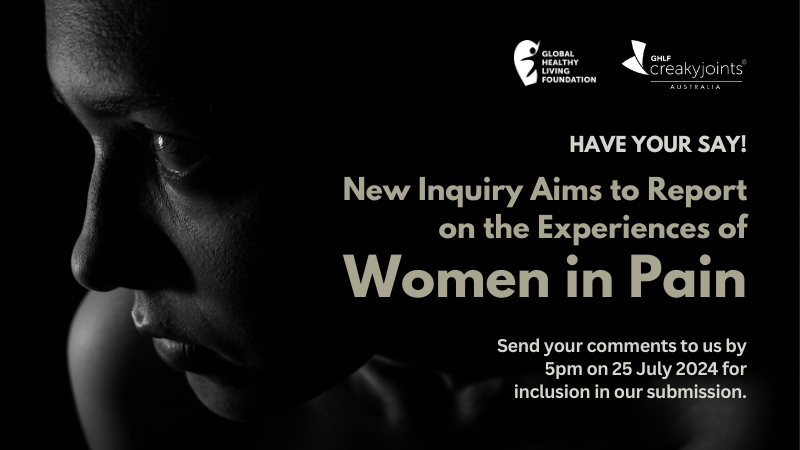This years’ Federal Budget was very positive for some areas of the health system in Australia, but others were only notable because they were hardly mentioned.
In May, CreakyJoints Australia’s national coordinator, Naomi Creek, attended a 2018/19 Health Budget briefing in Canberra with Federal Health Minister Greg Hunt. The event was sponsored by Johnson and Johnson and Bupa and attended by representatives of a range of peak organisations from across the health sector.
Mr Hunt gave a summary of the new health policies that were announced in the Federal Budget two days earlier.


The health budget winners
Top priorities in this budget will include addressing more private health insurance reforms, creating better access to mental health services, and greatly improving access to rural and regional health services.
Overall, the health budget has had a $12.4 billion increase in funding, including:
- A $4.8 billion increase in Medicare funding.
- A $5 billion increase in aged care funding.
- A $2.4 million in new spending on the Pharmaceutical Benefits Scheme (PBS).
- An increase in hospital funding from $100m to $130m over a 5 year period.
There will be a very strong focus on rural health and medical training with 3,000 additional doctors and 3,000 additional nurses expected to work in rural Australia over the coming years. New arrangements between the main teaching universities and rural partners will allow medical students to ‘Learn in the bush, train in the bush, and stay in the bush’.
Big savings will be made through the increased use of generic and biosimilar medicines with corresponding education for health professionals in this area. The savings will be used to fund many other PBS medications.
The new PBS funds will include $1.4 billion of new or altered listings that will allow access to a greater range of medications. There is a commitment in this budget to list every medicine that is approved by the Pharmaceutical Benefits Advisory Committee (PBAC).
Mental health service funding will receive a boost. The Government will be working with Beyond Blue and Sane Australia on major projects focused on areas such as suicide prevention, better access for mental health services for older Australians, eating disorders, and the largest ever research program for mental health in Australia.
$6 billion will be spent over the course of the budget on medical research. Of this:
- $240 million will be for a frontier science program focused exclusively in the health sector.
- $125 million will be allocated to a dedicated chronic disease fund with a focus on prevention research for cardiovascular disease and diabetes. The chronic disease fund will extend to other conditions but cardiovascular and diabetes will be the central focus.
- $500 million for new research in the field of genomics. Over 10-20 years, this will help usher in a medical revolution in Australia aimed at making Australia a world leader in delivering precision medicine (as genomic information can be used to help inform patient diagnosis and treatment).
Although none of these budget items are specific to arthritis, many of us will still benefit from them in the long run.
What was missing from the budget
While the focus on funding for mental health services was generally well-received across the sector, it is still a drop in the ocean compared to the amount of work that still needs to be done to address the scope of the problem in Australia.
Another very notable omission was any attempt to address the increase in out-of-pocket expenses faced by many who rely on private and community health services. As anyone with a chronic health condition will testify, the difference between the fee charged by a medical specialist and the Medicare rebate can be up to hundreds of dollars per visit. For many, this means postponing visits or foregoing them altogether. In the meantime, their conditions can worsen and eventually require many more health care resources.
Many peak bodies and advocacy groups have been calling for reform to the Chronic Illness Management Plan (sometimes called a GP Management Plan) and the GP Mental Health Treatment Plan for years. The chronic illness plan currently subsidises up to 5 visits to allied health care professionals per year for those with chronic conditions. The mental health plan subsidises up to 10 visits to qualified mental health professionals per year. While these do help, many people need ongoing visits to help manage their condition effectively. And, again, the Medicare subsidy for these plans often does not cover the full fee charged, so that creates even more out-of-pocket expenses for patients.
(You’ll find more information about these plans and other Government pensions, benefits and services for people with chronic health issues on the CreakyJoints Australia website.)
Our health care system has always had a strong bias toward medical and surgical treatments, and, as a result, there is a notable lack of support for integrated health practices and multidisciplinary teams that include allied health professionals. Yet, countless research tells us that these approaches lead to better clinical outcomes and quality of life for patients will all sorts of conditions, including arthritis.
What can you do
If you know of an area of the Australian healthcare system that needs to be changed or that needs additional funding there are many avenues you can take to make your voice heard, including:
- Contacting your local member of State or Federal Parliament, explain your issue to them, and ask them to raise your concerns in Parliament on your behalf.
- Contact the Consumer Health Forum of Australia and ask them to advocate on your behalf. You can also become a member, subscribe to their newsletter, or let them help you become a consumer health representative yourself.
- Subscribe to CreakyJoints Australia to receive updates on health issues that we are campaigning on. For example, we regularly supply submissions on proposed new medications for arthritis to the Pharmaceutical Benefits Advisory Committee and we welcome your comments for these.
You’ll find more information on the 2018 Federal Health Budget in the Croaky article A great BIG wrap of #HealthBudget18 reaction – the good, the bad and the absent by Melissa Sweet, published in May 2018.
In related news…
At the Pain Australia Annual General Meeting in May 2018, the Federal Health Minister, Greg Hunt, announced funding for the National Pain Action Plan which aims to improve quality of life for the millions of Australians living with pain, their families and carers.
The plan will help to enable better awareness about chronic pain issues and increase access to prevention and early intervention, treatment and support, and research and evaluation.




